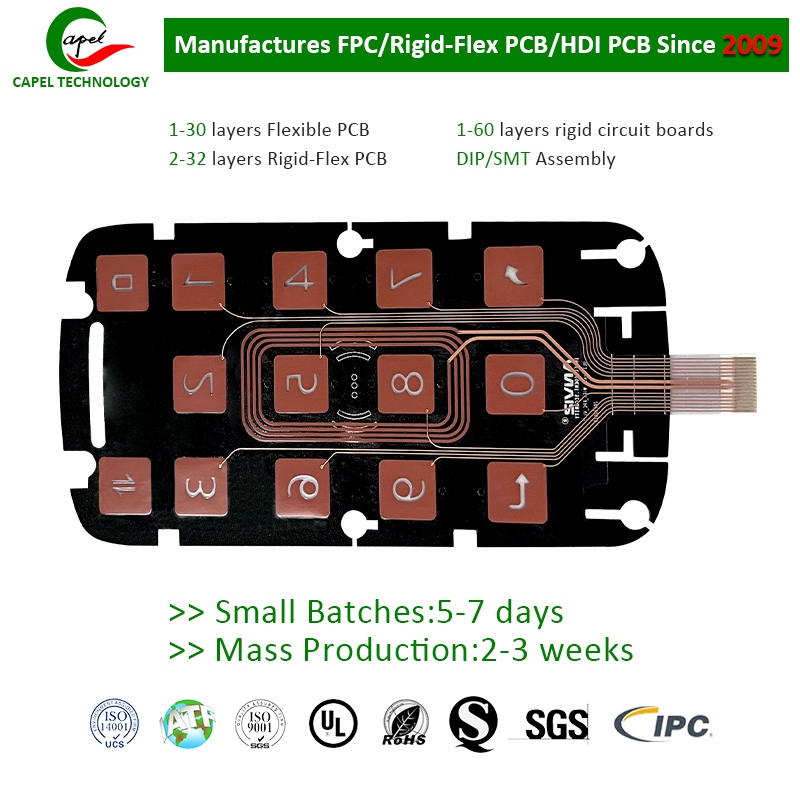Introduction
Flexible printed circuit boards (PCBs) have revolutionized the design and functionality of smart door locks, enabling engineers to address industry-specific challenges in the new energy sector. As an experienced rigid-flex PCB engineer with extensive experience in the smart door lock industry, I have successfully pioneered innovative solutions using flexible PCB technology. In this article, we will explore a series of case studies focusing on how flexible PCBs can help customers in the new energy sector overcome challenges and provide cutting-edge Electronic Lock pcb solutions.
Case 1: Smart door lock system pcb energy efficiency improvement Customer: A leading smart door lock manufacturer in the
new energy field
Challenge: The client sought to develop a smart door lock system that prioritized energy efficiency while maintaining seamless functionality. Traditional rigid PCBs have limitations in meeting the compact and flexible design requirements of energy-saving smart lock systems.
Solution: Leveraging my expertise in flex PCB technology, I proposed integrating a rigid flexible PCB to optimize the layout and connectivity of the smart lock system. By utilizing flexible PCBs, we are able to design more compact, lightweight systems that meet our customers’ energy efficiency goals. Flexible printed circuit board also facilitate the integration of energy harvesting technology, enabling smart locks to be powered using ambient energy, thereby reducing reliance on traditional energy supplies.
Results: The deployment of flexible PCBs significantly improved the energy efficiency of the smart door lock system, exceeding customer expectations. The client’s new energy industry customers benefit from a sustainable, environmentally friendly smart lock solution that minimizes energy consumption and promotes environmental protection.
Case study 2: Seamless integration of renewable energy in access control systems pcb Client: Innovative access control system
provider in the new energy field
Challenge: The client aimed to develop an access control system that seamlessly integrates renewable energy sources (e.g. solar) in order to align with the prevailing sustainable energy plans in the new energy sector. Traditional PCB designs pose challenges in adapting to different energy interface requirements and cumbersome connection arrangements.
Solution: Drawing on my extensive experience in designing flexible PCBs, I proposed a custom rigid-flex PCB solution that met the specific design complexities of integrating renewable energy into access control systems. Flexible PCB architecture enables efficient energy utilization and storage by seamlessly integrating solar panels, energy storage units and power management systems into the access control system’s compact footprint.
The result: Using flexible PCB technology, customers were able to launch a breakthrough access control system that harnesses renewable energy with exceptional efficiency. The innovative integration of solar and other renewable energy inputs results in sustainable and cost-effective access control solutions that resonate with the sustainability aspirations of customers in the new energy sector.
Case 3: Durability and weather resistance of battery-powered smart lock system pcb Customer: Leading provider of battery
door switch solutions in the new energy field
Challenge: The customer sought to develop a battery-powered smart lock system with strong durability and weather resistance to meet the harsh environmental conditions prevalent in the new energy sector. Traditional rigid PCB architecture lacks the flexibility and durability needed to withstand extreme environments while maintaining excellent performance.
Solution: Leveraging my expertise in rigid-flex PCB design, I worked with the client to develop a tailor-made solution that integrated durable and weather-resistant flexible PCB material in strategic areas of the smart lock system. The rigid-flex design facilitates a seamless combination of rugged connectors, protective coatings and weatherproofing, ensuring the resilience of battery-powered smart lock systems in harsh environmental conditions.
Results: After deploying flexible PCB technology in a battery-powered smart lock system, the product’s durability and weather resistance exceeded industry standards. The smart lock system demonstrates unparalleled performance and longevity, winning praise from customers and end-users in the new energy sector for its reliability and sustainability credentials.
Conclusion
The successful integration of flexible PCB technology has proven to help solve industry-specific challenges and drive innovation in the smart door lock industry in the new energy sector. By leveraging the inherent advantages of flexible PCBs, including lightweight design, energy efficiency and durability, we pioneer cutting-edge smart lock solutions that align with our customers’ sustainability and energy efficiency goals. As a rigid-flex PCB engineer with a deep understanding of the industry, I have always been committed to promoting the continuous advancement of smart lock technology through the strategic application of flexible PCB in the new energy field.
In conclusion
The case studies presented in this article highlight the key role of flexible PCB technology in redefining smart lock solutions in the new energy sector, providing sustainable, energy-saving and resilient access control systems, paving the way for greener and smarter access control systems . Efficient future.
Post time: Dec-20-2023
Back







